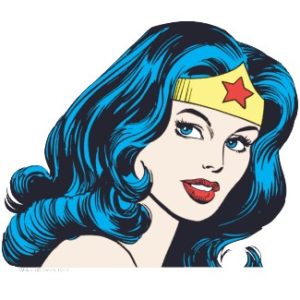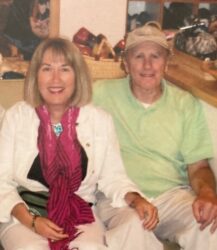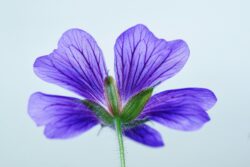Supergirl and Wonder Woman: The Rise of the Female Superhero

Women need heroes.
Until recently male superheroes—Superman, Batman, Zorro, The Green Hornet, Captain Marvel, Captain America—have received the lion’s share of attention in films, comic books, and comic strips.
Recently on Yahoo news, Katie Couric examined the phenomenon of newly-emerging female superheroes and the women who create them. In that same article, commenting upon the upcoming release of the film Wonder Woman, due out in 2017, and the new television show Supergirl which premiered October 26 on CBS, Brian Prowse-Gany described this time as “a new golden age for the female superhero.” Wonder Woman, Supergirl, and other female superheroes are starting to step onto center stage.
“Supergirl is the first bona fide female superhero show to hit primetime TV since Wonder Woman went off the air in 1979.” (Rolling Stone)
These superheroes are fictional, granted, but there is a correlation with what is happening in real life. And perhaps that is the reason why the time for a full female superhero series on primetime TV has finally arrived.
In Marvel and DC comics and in film, women stepping into the roles of superheroes are redefining the old stereotypes and gender roles which portrayed women as “damsels in distress” in need of rescue.
Note that this is happening when for the first time in US history two viable woman candidates are running for their parties’ nomination for president.
This is not entirely a new phenomenon. Wonder Woman, the mother of all female superheroes, was created in 1941, at a time when the suffragettes were making great advances in winning women’s right to vote and gaining equal opportunity for women in the workplace.
In 1972, another time of great advancement in the field of women’s rights, Gloria Steinem put Wonder Woman on the front cover of the first edition of Ms. magazine with the slogan “Wonder Woman for President.”
Now, once again, as women are making a greater impact than ever before , Wonder Woman and other female superheroes—many of whom she’s served as a prototype for—are also stepping front and center.
Today, young girls carry Supergirl lunch boxes to school. At Halloween, many don Supergirl costumes.
A new generation of young women think of their future in terms of becoming scientists, inventors, social activists, lawyers, CEO’s, doctors, engineers, and more, exploring fields that a generation or two ago did not even exist.
In 1941, William Moulton Marston, a Harvard psychologist who invented the lie detector, created Wonder Woman, the first comic-book female superhero.
According to Jill Lepore, professor of American history at Harvard, New Yorker staff writer, and author of The Secret History of Wonder Woman (2014), Wonder Woman’s appearance on the page was largely inspired by the work of Lou Rogers, a feminist cartoonist in the early 20th century. Her political cartoons appeared everywhere from suffragette publications to the Ladies’ Home Journal. A typical Rogers cartoon depicted the struggles of women’s rights with a drawing of “a woman, chained or roped, breaking her bonds.”
Rogers’ political cartoons greatly shaped the way Wonder Woman would eventually be depicted by Harry G. Peter, the artist who drew Wonder Woman. Rogers and Peters worked together (Peters sometimes filled in for Rogers) at the humor magazine Judge.
The character of Wonder Woman was “born in Bohemia.” In Greenwich Village during the early 1900’s, stories of Amazon women abounded in poetry (Max Eastman’s Child of the Amazon) and novels (Inez Gillmore’s Angel Island and Charlotte Perkins Gilman’s Herland.) The story of Wonder Woman is the story of Diana, princess of the Amazons, and it comes directly out of the popular literature of the day. At that time, chained women were also a symbol common in feminist literature.
While William Marston and his wife Elizabeth Holloway were graduate students in psychology at Harvard and Radcliffe, they read a book called Women and the New Race (1920), written by the feminist Margaret Sanger.
They were influenced by Sanger’s idea that “women should rule the world, because love is stronger than force.”
It was Margaret Sanger’s philosophy in Women and the New Race which would turn out to be the philosophy behind Wonder Woman:
With the beauty of Aphrodite, the wisdom of Athena, the strength of Hercules, and the speed of Mercury, she brings to America woman’s eternal gifts—love and wisdom! Defying the vicious intrigues of evil enemies and laughing gaily at all danger, Wonder Woman leads the invincible youth of America against the threatening forces of treachery, death, and destruction. (Sensation Comics #3, March 1942)
Lepore revealed in her book that Marston, his wife Holloway, and Margaret Sanger’s niece Olive Byrne pointedly created Wonder Woman as a character to inspire young women to take on new leading roles in society. These three co-creators were firm supporters of women’s rights.
It’s interesting to note that at this time in history, as women are fulfilling the role that the creator of Wonder Woman envisioned for them, we also for the first time in western history have available Transcendental Meditation— a simple technique which enables women to unfold their capacity to take on these new roles with ease and grace. More than 360 peer-reviewed research studies on the TM technique have shown that overall, TM increases the use of one’s full potential (Journal of Counseling Psychology)—increasing the very qualities we associate with superheroes.
Ultimately, I think we could agree that every woman wants to be happy, to feel fulfilled. Perhaps not every woman desires to be “faster than a speeding bullet or able to leap tall buildings in a single bound,” but Wonder Woman was created to inspire women everywhere that each of us has an innate ability to fulfill whatever our goals are, and to show us that any role we want to take on is ultimately possible for us. Every woman has within herself the ability to break through any glass ceiling over her.
In the autumn of 2014, at Brattle Theater, at 40 Brattle Street in Harvard Square, Cambridge, Jill Lepore spoke to a packed house about her recent book and showed videos of the different incarnations of Wonder Woman and the female superheroes she inspired (Wonder Girl, Superwoman, and Supergirl, among others). This talk took place one floor below the old Brattle Hall which was the dance hall which William Marston and 1500 other Harvard and Radcliffe students mobbed one December night in 1911 to listen to a highly politicized talk given by British suffragette Emmeline Pankhurst—who had been barred from speaking on the Harvard campus because she was a woman. It was just one century since the inspiration which set in motion William Marston’s creation of Wonder Woman.
At the close of Lepore’s book she writes: “The fight for women’s rights hasn’t come in waves. Wonder Woman was a product of the suffragist, feminist, and birth control movements of the 1900s and 1910s and became a source of the women’s liberation and feminist movements of the 1960s and
1970’s. The fight for women’s rights has been a river, wending.”
This autumn Supergirl comes to TV for the first time ever in her own series—once again reminding a new generation of young women that they are powerful, creative, dynamic, and capable of “saving their own neighborhoods.”
About the Author
Colleen Chatterton is a freelance writer living in Cambridge, Massachusetts.





